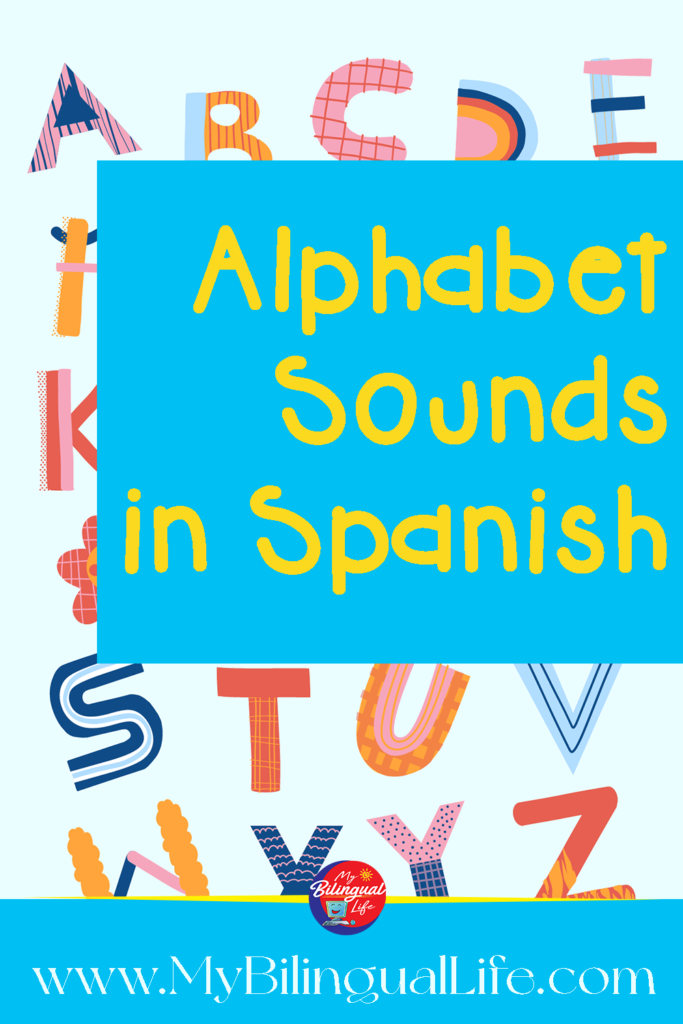Have you been curious about alphabet sounds in Spanish? Learning a new language opens up exciting opportunities for communication and connection. One of the foundational steps in learning Spanish is mastering the sounds of the Spanish alphabet. The beauty of Spanish lies in its consistency; each letter has a distinct sound. In this beginner’s guide, we’ll explore the sounds of the Spanish alphabet, helping you take the first step toward Spanish fluency.

The Spanish Alphabet: An Overview
The Spanish alphabet comprises 27 letters, including the 26 familiar letters from the English alphabet and the unique “ñ” (pronounced as “enye”). What sets Spanish apart is the simplicity of its letter-sound correspondence. Unlike English, where letters can have multiple pronunciations, in Spanish, each letter represents a consistent sound.
Alphabet Sounds in Spanish – Learning the Vowels
Let’s start with the vowels. Spanish has five vowels: “a,” “e,” “i,” “o,” and “u.” The great news is that these vowels always sound the same, making pronunciation a breeze. Here are their sounds:
- “a” as in “casa” (house)
- “e” as in “perro” (dog)
- “i” as in “niño” (child)
- “o” as in “sol” (sun)
- “u” as in “luna” (moon)
Practice these vowel sounds, and you’re off to a great start in Spanish pronunciation.
Alphabet Sounds in Spanish – Consonant Sounds and Special Cases
Spanish consonants offer consistent sounds as well. While some consonants might look familiar, their pronunciation can be slightly different. Here are some key consonant sounds:
- “c” and “g” before “e” and “i” are pronounced like “th” in “thin.” For example, “ciudad” (city) and “gente” (people).
- The letter “r” is pronounced as a single flap of the tongue against the roof of the mouth, as in “pero” (but).
- The double “rr” in Spanish, as in “perro” (dog), creates a strong rolling “r” sound, which may take practice to master.
Alphabet Sounds in Spanish – The Unique “ñ” Sound
The letter “ñ” is exclusive to Spanish and represents a sound similar to the “ny” in “canyon.” It can be found in words like “niño” (child) and “baño” (bathroom). The “ñ” sound is one of the distinct features that give Spanish its melodic quality.
Common Pronunciation Challenges
As you dive into Spanish pronunciation, be prepared to face some common challenges. Differentiating between “b” and “v,” mastering the rolling “r” sound, and pronouncing “j” and “g” can be tricky. For example, “vino” (wine) and “bien” (well) may sound similar to the untrained ear, but with practice, you’ll learn to distinguish these sounds.
Conclusion
Mastering the sounds of the Spanish alphabet is an essential first step in your journey toward Spanish fluency. Remember that practice makes perfect, and don’t be discouraged by initial challenges. Keep practicing, immerse yourself in the language, and soon you’ll be conversing with confidence in this beautiful and melodious language. ¡Buena suerte! (Good luck!)
One suggestion for learning and remembering these alphabet sounds is by learning a word that uses each sound. Check out this article that will give you resources for that.
Resources at My Bilingual Life for learning the Alphabet Sounds in Spanish
Watch this video and learn the Spanish alphabet sounds. I’ll also cover some sounds that give native English speakers problems.
We also have a variety of language learning products in our Teachers Pay Teachers store. Be sure to check it out!





